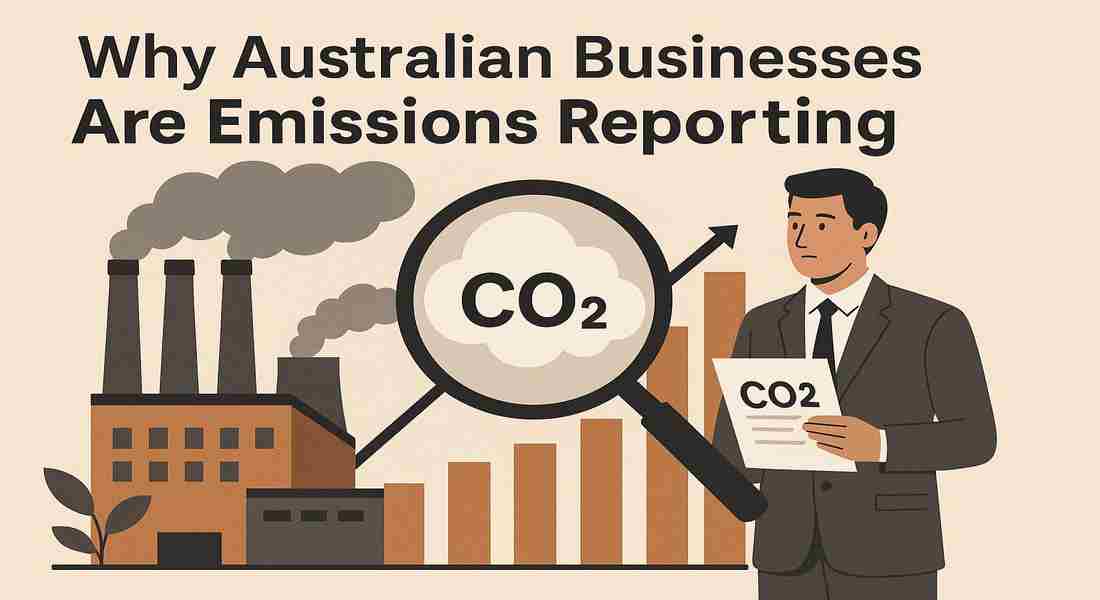Why Australian Businesses Are Racing .Beyond Compliance: Why Australian Businesses Are Racing Ahead on Emissions Reporting in 2025.Hey there, change-makers! 👋 If you’ve been tracking Australia’s sustainability scene, you’ll know 2025 isn’t just another year—it’s a tipping point. While new mandatory climate reporting rules are rolling out, something unexpected is happening: Australian businesses aren’t waiting to be pushed. They’re sprinting ahead, turning regulations into opportunities. Let’s unpack why.
🚀 The “No Matter What” Mindset
Why Australian Businesses Are Racing Ahead Emissions Reporting .
Imagine committing to emissions transparency even if laws changed overnight. That’s exactly what 81% of Australian executives plan to do, according to Workiva’s 2025 Executive Benchmark Survey 13. Compared to global peers (like the U.S. at 74%), Aussie firms are leading this charge. As Narain Viswanathan of Workiva puts it: “Reporting climate disclosures should be the default setting” .
📜 The Regulatory Backdrop (Quick Crash Course)
Why Australian Businesses Are Racing .Yes, new rules are landing. Starting January 2025, large entities (dubbed Group 1) must disclose climate risks, emissions (Scopes 1, 2, and phased-in Scope 3), and conduct dual scenario analyses (1.5°C and 2°C+ warming) 456.
Who’s in Scope?
Group |
Criteria 🎯 |
First Report Due |
|
Group 1 |
$500M+ revenue, 500+ employees, or $1B+ assets |
2025 (e.g., Dec 2025 year-end) |
|
Group 2 |
$200M+ revenue, 250+ employees, or $500M+ assets |
2027 |
|
Group 3 |
$50M+ revenue, 100+ employees, or $25M+ assets |
2028 |
46 |
But here’s the twist: firms aren’t complying just to check boxes. They’re seeing value.
💡 Why Go Beyond Compliance?
-
Investor & Customer Trust: 97% of Aussie execs say integrating financial and sustainability data reveals growth opportunities and inefficiencies 13. Jane Diplock AO (World Benchmarking Alliance) nails it: “Investors focus on companies delivering solid returns while positively contributing to society”1.
-
Competitive Edge: Take the insurance sector—85% have pledged net-zero by 2050, and 50% are targeting operational net-zero by 2030. Over half even tie exec pay to climate metrics! 1.
-
Future-Proofing: Transport (21% of Australia’s emissions) faces huge Scope 3 complexity (think supply chains, employee commutes). Leaders like Cario’s freight carbon toolsare turning this challenge into optimization goldmines 9.
🧩 The Hurdles: Data, Tech & Mindset Gaps
Despite enthusiasm, roadblocks remain:
-
Tech Underprepared: 94%of Aussie leaders admit their reporting systems can’t handle new standards (vs. 73% globally) 13.
-
Data Distrust: 33% doubt their financial data’s accuracy
-
AI Anxiety: 94% fear risks in generative AI for reporting—though it’s also a huge opportunity 1.
Mark Mellen (Workiva) sums it up: “The closer [regulations] get, the more pressure they feel. But it’s a prime opportunity to upgrade tools” 1.
🛣️ Your Action Plan: Turning Intent into Impact
Ready to thrive in this new era? Here’s how:
-
Start Scoping: Audit emissions now—especially Scope 3(e.g., logistics, waste). Tools like Cario’s Freight Carbon Calculator simplify transport tracking 9.
-
Integrate Reporting: Merge financial and sustainability data. 94% of AU firms already do this—and it’s a game-changer for spotting risks/opportunities .https://www.insurancebusinessmag.com/au/news/environmental/australian-firms-push-ahead-with-emission-reporting-plans-537547.aspx
-
Leverage Tech: AI isn’t just a risk—it’s your ally. “If you trust your data, you can trust how AI interprets it,”says Viswanathan https://itbrief.com.au/story/australian-firms-lead-global-peers-in-pledging-ongoing-emissions-reporting
-
Collaborate: Work with suppliers on data sharing. Scope 3 is too big to tackle alone!
